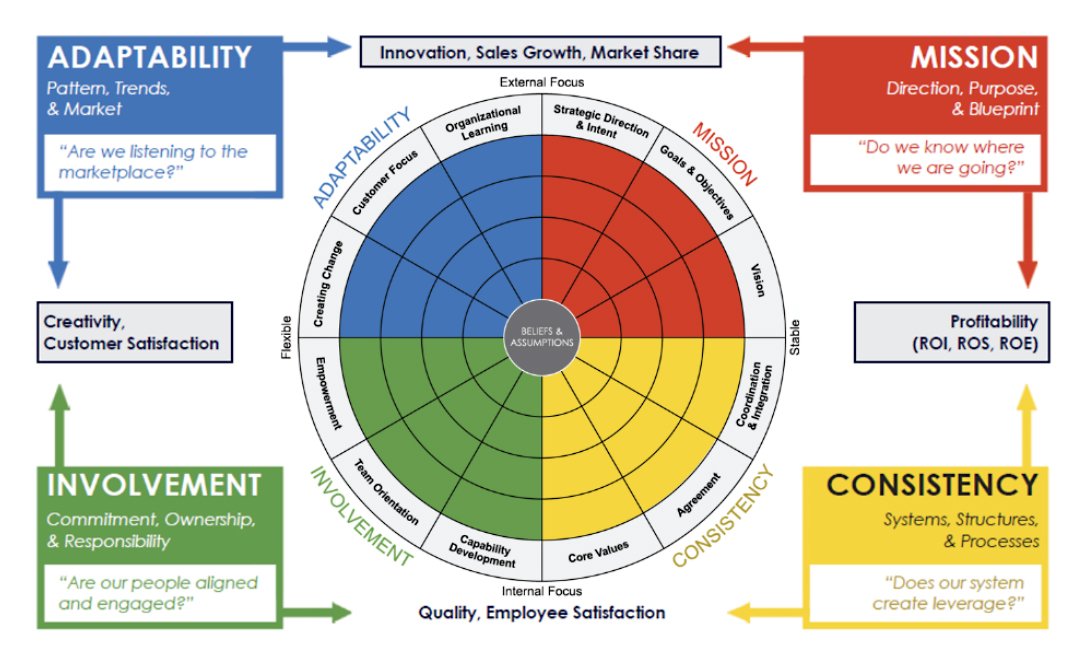HOW CLEAR DO YOU AS A LEADER SEE YOUR POST-COVID BUSINESS DELIVERY CONNECT TO YOUR CURRENT CULTURE?
The 2nd in a three-part series.
“whether you are aware of it or not, your culture will and is influencing your bottom line. If you are not managing it, it will be managing you”.
This is why business leaders need to understand how and where culture impacts their performance i.e. strategy. Whether we choose to focus on it or not. Hence the famous words of Peter Drucker; “Culture eats strategy for breakfast”.
That’s why at Denison Consulting we believe that to talk of culture without context is meaningless. Culture is about ‘business effectiveness’ and thus also about the effectiveness of your strategy deployment. As the previous blog points out, mapping your current cultural diagnostic onto your strategic planning becomes a tough conversation requiring both ‘hard’ and ‘soft’ skills to maximise the impact of such a discussion.

It’s in the face of context that cultural (or any other) patterns create its meaning. It is the basis of the concept of the Darwinian principle of survival of the fittest. This doesn’t necessarily mean ‘the strongest’, but the one who ‘knows best’ how to adopt to the environment. Allow us to use an example from nature we all know. Remember the basic laws of natural evolution; babies resemble their parents, yet are slightly different. So, two brown bears make little bears. All of these baby bears are brown. Yet some of them will have a lighter fur color than others. The result is a mix of lighter and darker little brown bears. Now consider the polar bear. Evolutionary speaking this is just a very-very light-brown brown bear whose pigment disappeared over the course of millions of years, because it’s context existed of ‘a totally white background’. How did this happen? Consider shades of brown bears wondering off into a white world where they pray on seals. Seals see a dark silhouette against a white background approaching rapidly. What do they do? They disappear, right? So, who manages to eat? Exactly, the bear with the lightest fur tone. Let’s speed up the evolutionary timeline. Add a few millions of years of evolution and you end up with perfectly white polar bears. Which now by the way, face the exact opposite problem because their background is turning dark again.
The Covid crisis is a contextual wake-up call.
Why is this relevant in the face of the Covid-19 challenge? Well, there are a few differences, but also a few resemblances to our advantage. The resemblance is, our familiar world turned ‘brown’ overnight with Covid. And we’re all still running around with white furs. The Covid crisis is a contextual wake-up call. The difference and advantage is however that human beings are smart, so we don’t have to wait for millions of years until our furs change color (and perhaps become extinct whilst waiting).

Let’s say the fur’s ability to change color represents our company culture and the disappearing snow the context of the current economy and Covid-19.
We have to balance and leverage our culture in a way we have never done before. We have to tap into our cultural strengths in order to adapt to the new context.
During the past 10 to 15 years, ‘Company Culture’ has gradually earned a place on the radar screen, however in many companies the field of company culture is often primarily owned by the HR professionals. This does not necessarily mean that it’s actually being intrinsically balanced with, and integrated into, the business side of the leadership.
In many companies HR professionals have embraced company culture as ‘their thing’, which is good; but the risk is that it becomes ‘something of HR’ rather than something which (also) steers the business. Over the years company culture is often mono-interpreted and summarized with fashionable words, such as engagement, employee happiness, best-place-to-work and the likes thereof. Although very important, these are only a few complimentary aspects of many other distinct traits that describe a company culture. To point out one important differentiator; engagement and happiness are all about the individual and culture is all about the collective.
If we ignore the collective aspect of the total cultural dynamic, it is like driving a car without appreciating and utilising the steering wheel, brake, head-lights and wipers. As a result, you will be able to drive a car, but wreck it as soon as circumstances change (rain, curves, mountainous terrain). Leaders of High-Performance Cultures understand and handle all complementary aspects of their culture at the same time, from the perspective of the meaning they have, the direction they’re headed and the value they bring, in terms of the contextual changes they are facing.
In other words, information about the current state of your culture, only provides real strategic value if and when it encompasses completeness of the total spectrum of cultural dynamics, and enables you to map why you are where you currently are, whilst providing directional guidance for the future at the same time.
That’s why, at Denison Consulting, one of the key interventions is a business-culture-mapping where we explore which cultural drivers correlate best with your business context (strategy). In polar bear terms; which genes interact and react (the bear’s fur) with the environment (white snow) in order to be able to predict, optimise and boost the changes for survival (catch and eat seals). So, metaphorically speaking, if after thorough examination of your company’s cultural gene pool, it appears that your company is extremely good in changing its fur colour, it might be a good idea to implement a strategy that makes use of that fundamental trait, rather than a strategy that anticipates the slimmest hope that ‘your bear could grow wings overnight’. The question is how many leaders and companies seriously investigate and take this step of researching and understanding their cultural gene pool, before leap frogging into the ‘next strategy’?
See below for an example of a ‘Strategy Map’ which places a company’s current state diagnostic of their collective culture, at the centre of their strategic plans. The 4 rectangles perfectly depict the correlated strategy areas. In one glance it becomes visible where ‘snow’ contrasts with a ‘too brown fur color’ and which cultural areas predict successful seal hunting and which not.

In many companies, the ownership of company culture manifests itself in the yearly running of an engagement survey. This HR roll-out is often seen by some business owners as a disturbance of their daily routine and a waste of time, rather than embracing the effort as valuable input in the strategizing effort and making (thinking of) it part of their daily routine.
Let’s consider the reversed; suppose your company would run a once-a-year-strategy-survey and ask managers to come up with 3 – 5 improvement bullets for strategy. Would you see the roll-up of these improvement initiatives becoming the only guiding principle and strategic compass for the entire company until next year’s survey? No questions asked, no further iterations done? Maybe this sounds strange, and yet, this is exactly what many companies do with regard to (not) understanding the intrinsic and business metrics of their cultural dynamics.
This is why culture should be balanced as a joint effort with strategy and not ‘owned’ by HR with the risk of them being the ones running the yearly cycle of the ‘oh-here-they-come-again-effect’. HR should not ‘own’ the topic or ‘tell’ others what to do, but facilitate leaders and employees in understanding and handling the ‘scary soft part’ of it, creating honest conversations from a collective and segmented diagnosis (see our previous blog)
Just as the CFO or the CIO use their subject matter expertise to guard and facilitate the understanding of their portfolios as an intrinsic part of the business strategy. HR professionals could gain by managing the psychological bandwidth of ‘the fear’ of the unseen and potential avoidance of being forced to look in the mirror. It takes courage to establish an honest conversation that may be ‘tough’ for some (leaders in the boardroom) to hear. Such conversations can put a strain on trust because the exposure of the diagnosis does not always bring good news to the top.
The only way to circumvent this is twofold;
1) Make sure the strategy-culture fit does not become a ‘gap’ but an integral part of running your business, just as you would with Finance or IT
2) Make sure top management owns culture, just as they do Finance and IT and protect them from being the recipients, victims or spectators of the annual culture measurement, nor allow or ‘convict’ HR to run it as a separate side show.
And just that you know, as Denison partners around the world we would happily support you to avoid stepping into any luring strategy-culture gap.





